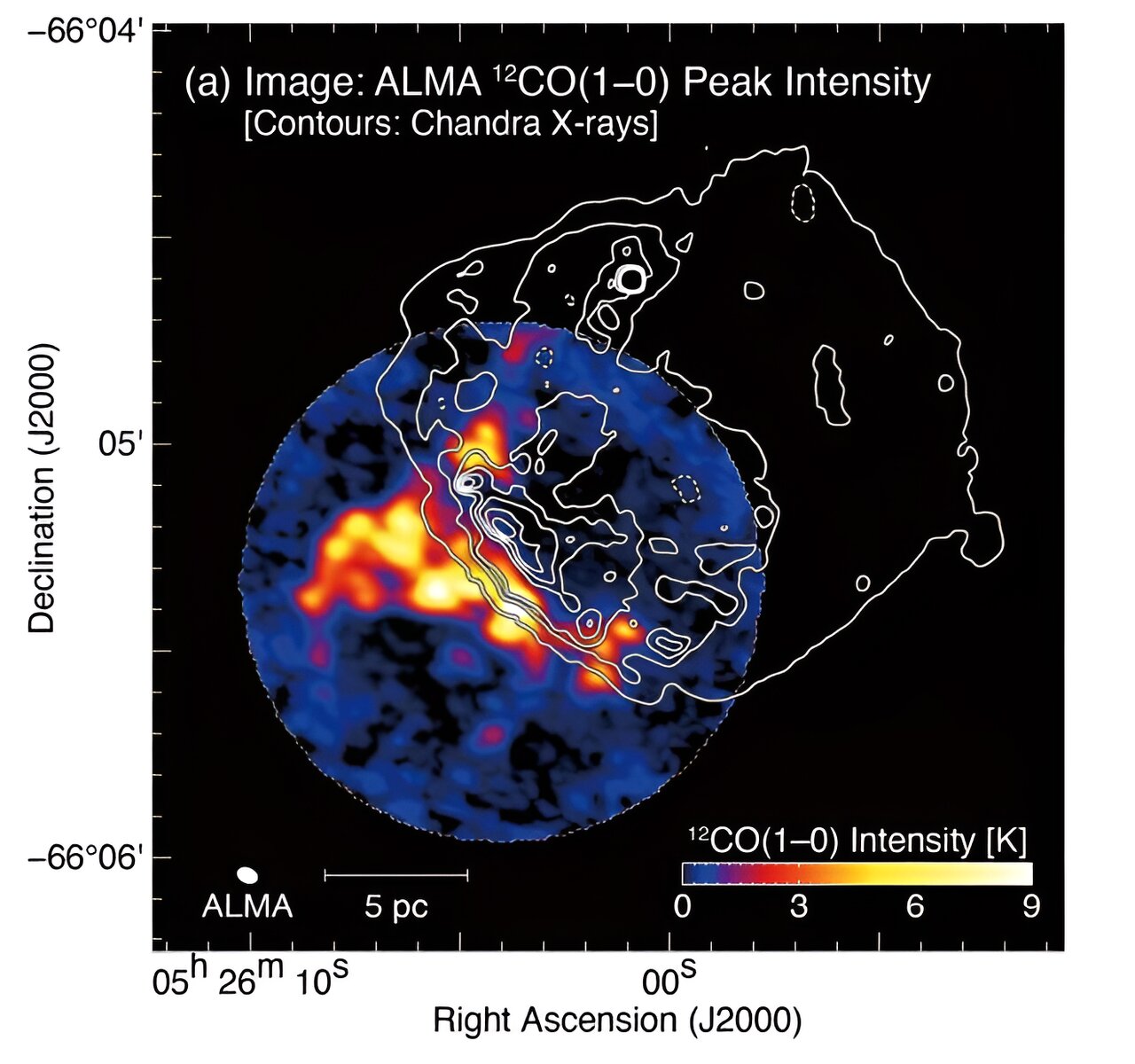Using the Atacama Large Millimeter/Submillimeter Array (ALMA), an international team of astronomers has observed a supernova remnant known as LHA 120-N49. Results of the observational campaign, published November 3 on the pre-print server arXiv, provide crucial insights into the nature and properties of molecular clouds associated with this remnant.
Supernova remnants (SNRs) are diffuse, expanding structures resulting from a supernova explosion. Observations show that SNRs comprise expanding material that was expelled during the explosion, as well as interstellar matter collected as it was swept up by the shockwave produced by the exploded star.
Studies of supernova remnants are important for astronomers, as they have a crucial impact on the evolution of galaxies, dispersing the heavy elements made in the supernova explosion and providing the energy needed for heating up the interstellar medium. Moreover, SNRs are assumed to be responsible for the acceleration of galactic cosmic rays.
LHA 120-N49 (or N49) is a bright X-ray supernova remnant in the Large Magellanic Cloud (LMC) with an apparent diameter of about 59 light years. The remnant has an age of about 4,800 years and its explosion energy is estimated to be at a level of 1.8 sexdecillion erg.
Previous observations have found that the environment of N49 contains molecular clouds and young stellar clusters. It appears that the shockwave from the SNR is interacting with dense clumpy interstellar clouds on the remnant’s eastern side. Recently, a team of astronomers led by Hidetoshi Sano of the Gifu University in Japan, decided to employ ALMA to investigate this interaction.
2023-11-15 03:41:03
Article from phys.org
